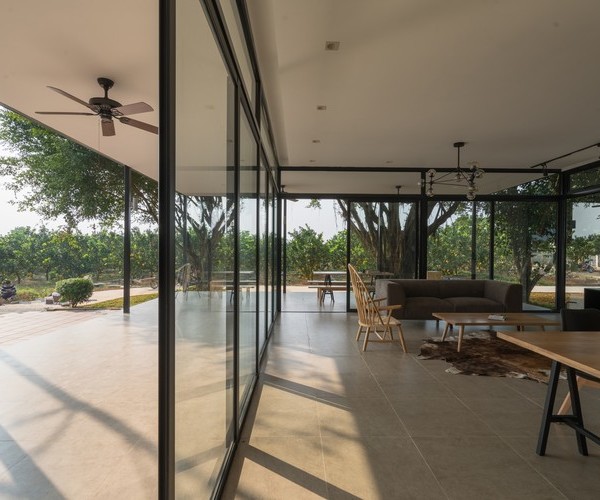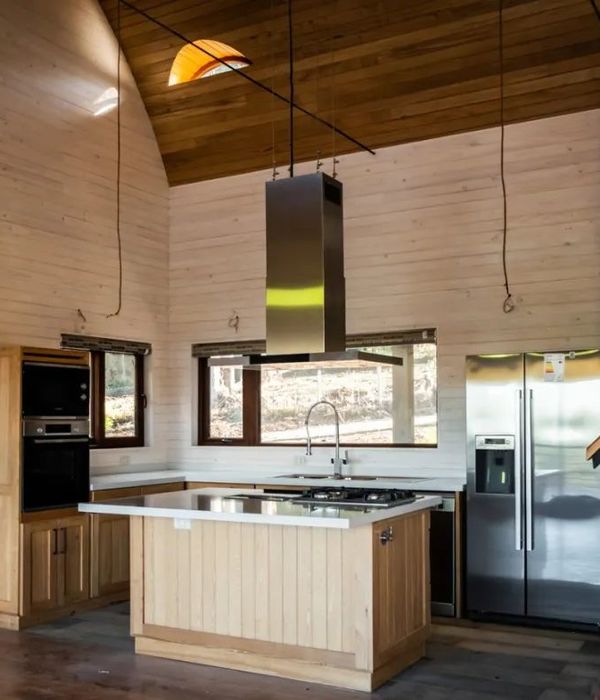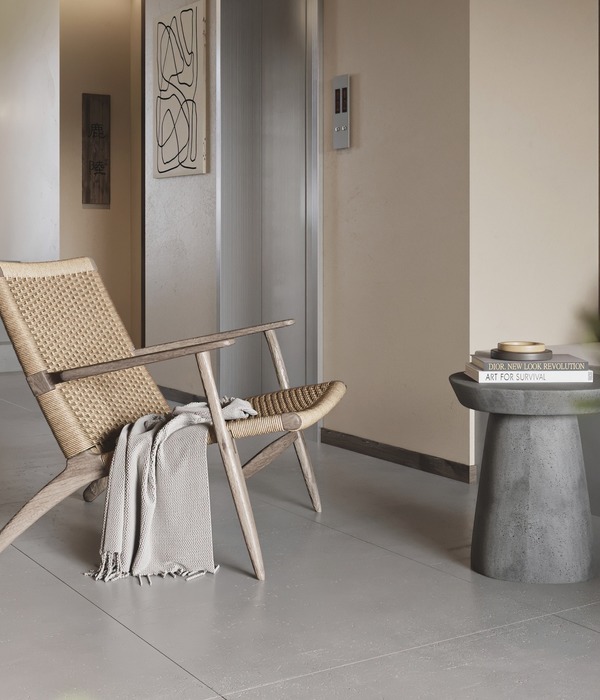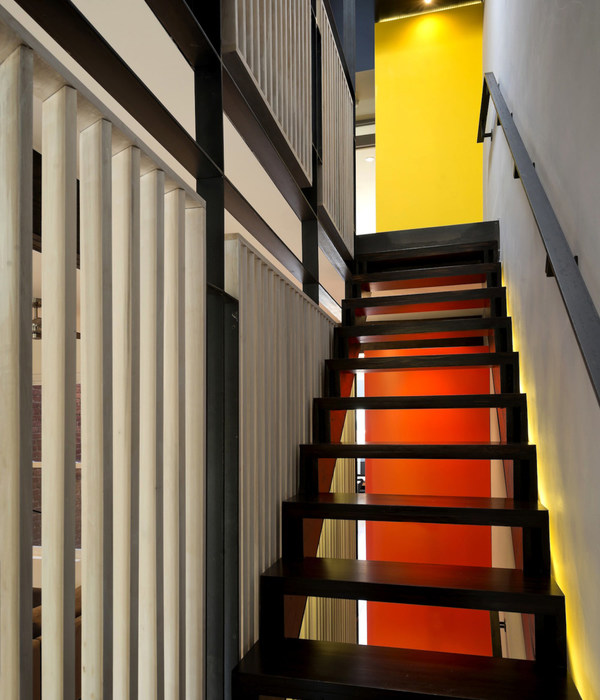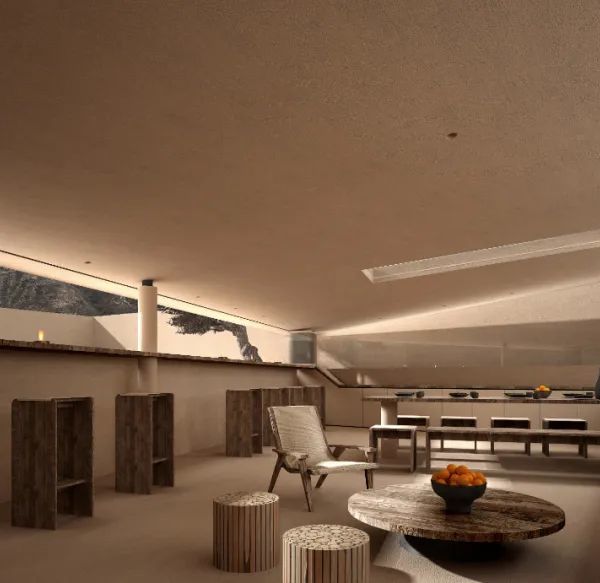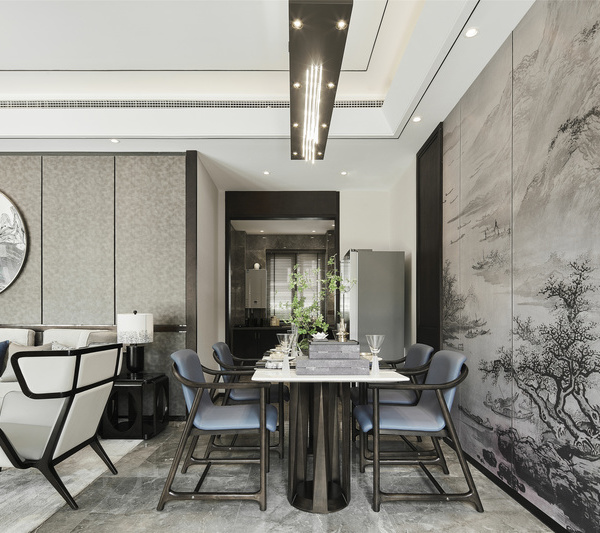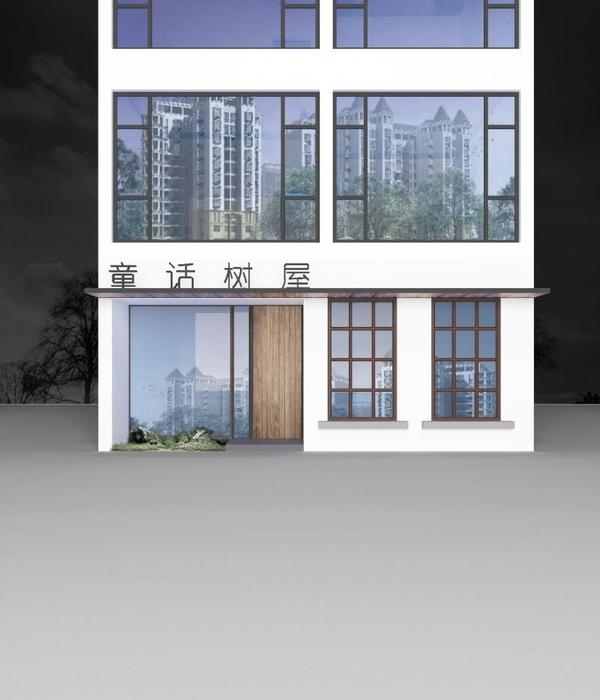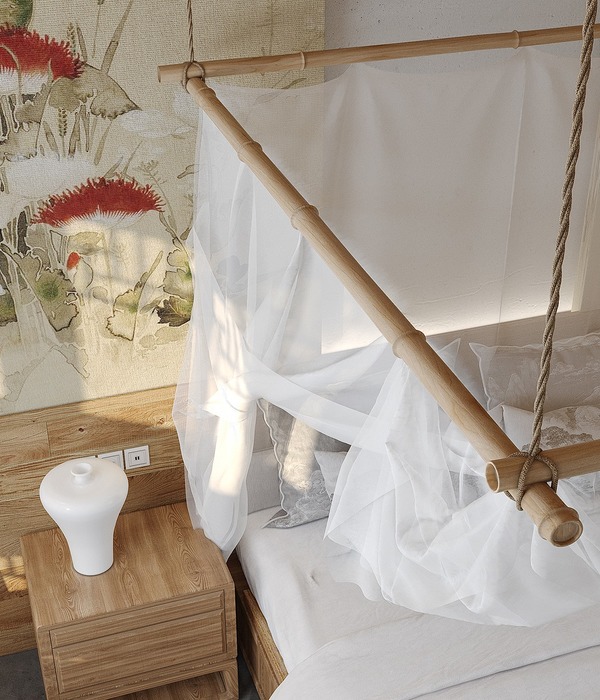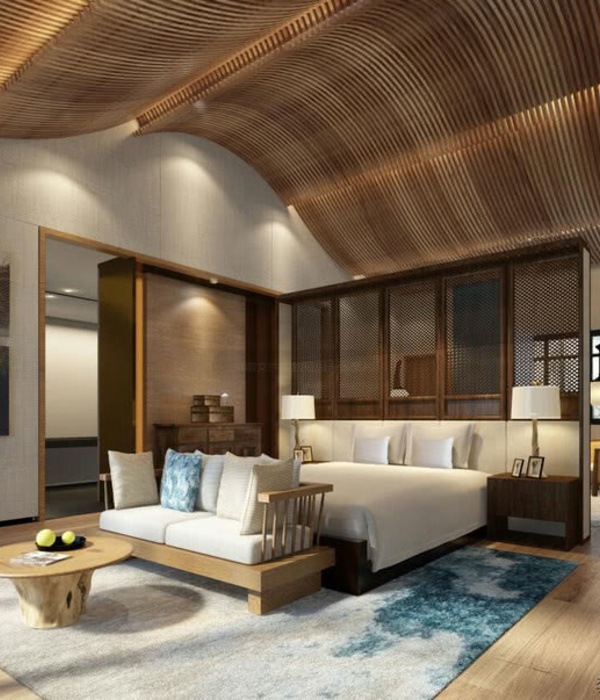非常感谢
TBIAppreciation towardsTBI
for providing the following description:Vincci Gala酒店是西班牙巴塞罗那一座拥有78间客房的四星级酒店。
建筑师对这栋酒店进行了外立面修复设计、内部重建设计甚至是灯光设计和图案设计,增加了三层楼面积,配置全餐厅,酒吧,会议室,屋顶花园等公共区域。
The Hotel Vincci Gala is a four-star hotel with 78 rooms, bar, restaurant, meeting rooms, and various terraces, situated in a period building in Barcelona′s Eixample district.
进入酒店,首先是一道铺着红色地毯的大理石白楼梯,两侧的装饰画是超现实主义画家萨尔瓦多·达利与他妻子的头像。抬头,便是这个酒店的金色中庭。金色是该酒店的基色,出现在各个地方,与各种材料以及色彩形成对比。呈现出低调奢华感。
The design of the new Hotel Vincci Gala is marked by two requirements. Firstly, the obligation of the Monument Protection Department of Barcelona to conserve both the facade and a large white marble staircase in the inside of the building and secondly, the name of the Hotel: “Gala” referring to the wife and muse of the surrealist painter Salvador Dalí.
Gala and Dalí formed an unlikely pair and similarly, the project reconciles multiple contrasts between the old and the new, the discrete the extravagant, the elegant and the informal.
The color gold is the keynote of this hotel that is repeated in different shades and applications, both on the external facade and the interior of the building, combined with organic shapes and contrasts between light and dark. The main material is metal in contrast to the stone and marble of the original architecture.
In addition to architecture and interior design, the TBI office is also responsible for lighting, decoration and graphic design which have achieved a complete and homogeneous design up to the last detail.
自然光充满酒店中庭。金色金属链上的黑色图案也蔓延到地板墙面,整体形成一个统一的金色空间。
Central atrium:The central atrium is the heart of the hotel and permits natural light to sweep through the building.
The unique geometric design of the curtains has been extended to the doors of the rooms and the patterns on the flooring in the hallways, creating together the sensation of a virtual space, characterized by the superposition of light, transparency, texture and the golden color.
金色的铝链条安放在扶手栏杆外侧,黑色的图影穿越而过。扶手栏杆内侧的LED光源让这金色帷幕更加闪耀。
Golden aluminum chains hang like an enormous veil over the glass balustrades. Dark linear patterns are integrated in order to create a singular optical effect. In addition, strings of LED light have been integrated into the hand rails making the golden curtain shine.
酒店的三个主要公共空间—-大厅,休息区还有酒吧分布在一楼,每个空间都有着自己的特色。大厅的白色大理石地摊上铺着耀眼的红色地毯,扶手栏杆有古典的卷曲造型。时尚要素也鲜明的存在,与古典元素共曲空间。酒吧在中央大厅一侧,其深黑色的可丽耐桌面还有黑色大理石地面与金色碰撞。紧邻的休息区铺着令人舒适的木材地板,优雅的家具与陈设让客人放松心情。
Common areas:On the ground floor the most common areas of the hotel are located. These are mainly divided into three spaces: the lobby, the lounge area and the bar, each of which has its own personality. The spacious lobby is characterized by the contrast of the large existing white marble staircase with a darker, contemporary and stylish interior designed to restage the staircase and to further emphasize her resplendence. The hotel bar is situated under the central staircase, forming a rectangular box fully encased with anodized gold expanded aluminum panels. A continuous element of black Corian frames the opening of the bar and forms a contrast between its organic shape in deep black and the rectangular gold box.
In the transition to the bar, the pavement changes from black marble to light oak flooring to create a warm atmosphere fusing modern with old and elegant with informal.
The lounge area is situated beside the central staircase. Wooden covered pillars form a barcode frame a protected and comfortable space with a private atmosphere.
The restaurant with the breakfast buffet and two meeting rooms is located in the basement. A flexible system of mobile partition panels enable the space to be divided as necessary, adapting it to the required use.
酒吧。黑色可丽耐打造的连续台面与金色墙面还有红色墙面形成撞色。
A continuous element of black Corian frames the opening of the hotel bar and forms a contrast between its organic shape in deep black and the rectangular gold box.
餐厅。移动装饰墙可根据需求实现灵活划分空间。
The restaurant with the breakfast buffet and two meeting rooms is located in the basement. A flexible system of mobile partition panels enable the space to be divided as necessary, adapting it to the required use.
Inner courtyard:In the inner courtyard terraces are located on different levels. A large terrace on the first floor, which is reached by the central staircase, serves as a lounge terrace with sofas, armchairs and an outdoor bar. On the ground floor there is a terrace with smaller dimensions and with direct access from the hotel bar and in the basement a patio provides natural light to the restaurant and meeting rooms.
绝大多数客房都有着统一的装修风格。折弯的木材状造体从床头蔓延,到达天花,内藏灯光,并与床头储物合并为一个整体。金色与灰色为房间主色。
Most rooms follow the same distribution concept. A z-shaped element made of laminated dark anthracite colored wood, integrated headboard, armoire and wall covering. Gold and gray tones in combination with indirect linear lighting give the rooms a warm and elegant atmosphere.
Main facade:The main facade of the hotel is divided into two parts, the old neoclassical facade and a new 3-storey extension.
The facade of the extension consists of a curtain wall and a layer of panels of expanded metal and creates a dynamic facade with a composition of openings and variations of orientations of the expanded metal that is enclosed by the existing cornice and a new top section. The golden shade and vertical openings creates a unit with the existing facade.
Here is more information from the architect:Illumination:Illumination is an essential part of the project and is resolved by indirect linear lighting and decorative suspended lamps, with special attention to the tone and color of the light. A lighting control system allows the creation of light scenes and helps to save electricity is installed in the rooms.Graphic design:To resolve the problem of different languages of the hotel guests, graphic design contains a reduced signage of pictograms designed especially for this hotel, inspired by the handwriting of Salvador Dalí.Sustainability:The goal of the project was to exploit the full potential by creating a sustainable hotel, both through architectural elements and system installations. The atrium joins all levels and provides the building with natural light. Special attention has been given to the design of the inner courtyard facade which is orientated to the south. Using prefabricated GRC (glass reinforced concrete) panels, a facade was created with small openings, balconies, awnings and sun protection panels all of which are architectural elements commissioned to protect the facade from solar radiation and prevent the overheating of rooms.
Also, recycled materials and coatings with low VOC (Volatile Organic Compound) emissions were used to improve indoor air quality.
The Reduction of electricity consumption is achieved by using LED lighting in most of the building and a control and management system that facilitates control of power consumption of the building at any time.
One of the points with the greatest impact on energy consumption of a hotel is the generation of domestic hot water. Obviating the use of the standard solution with solar panels, TBI proposed to the client an innovative system of cogeneration based on heat pumps that use natural gas as fuel for the air conditioning of the hotel.
By using a heat exchanger, the heat produced by the motor can be reused for generating hot water.
Thus, achieving a significant reduction in CO2 emissions from 305 to 85 kg CO2 / m2 year and energy consumption from 503,8 to 144,5 kWh / m2 year, relative to a reference building with the same characteristics.
So the Vincci Hotel Gala is one of the first hotels in Barcelona labeled with the building energy rating “A”.
Building energy rating: A
Location: Ronda Sant Pere 32, Barcelona, Spain
Area: 4600 m2Date: 2012 -2014
Customer: Activ-Group
Operator: Vincci Hoteles
Architecture, interior design, graphic design, construction management:TBI Architecture & EngineeringResponsible Architects: Miguel Jordá (Director TBI), Stefan Richter (Architecture), Gregor Mertens (Design and Interior design), Carlos Mir (Technical Architect)Collaborator: Grupo IPI S.A. and EMG (consulting engineers), Jorge Campreciós, Architect (License planning) José Hevia Blach (Photography)
MORE:TBI
更多请至:
{{item.text_origin}}


